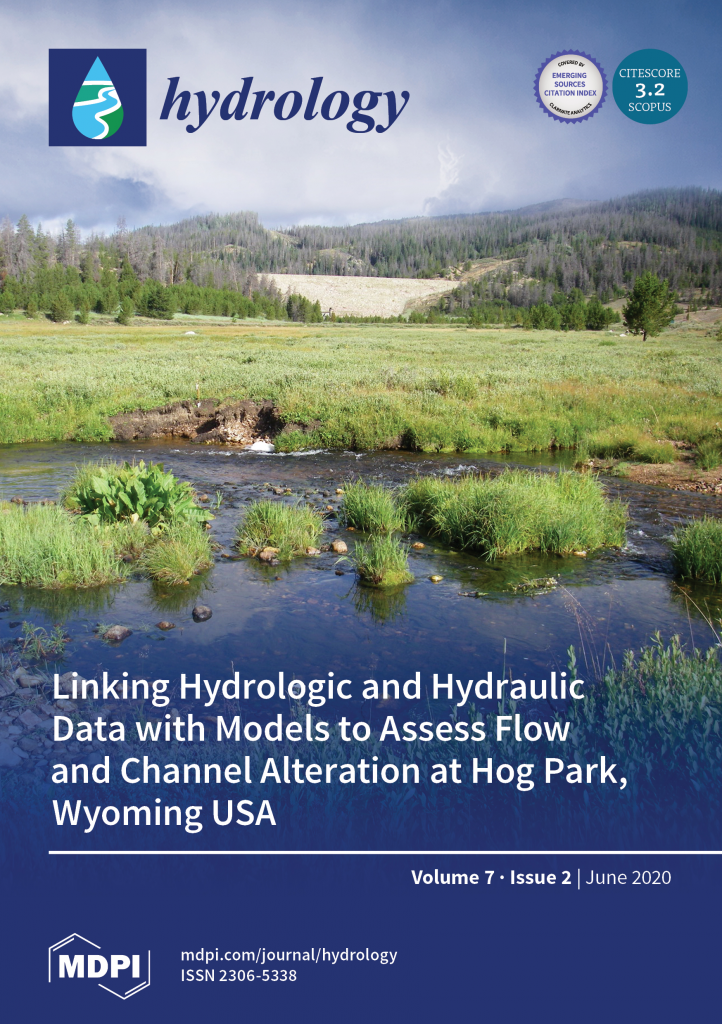
CSU Warner College publication awarded cover spot in Hydrology
In the June issue of Hydrology, you might recognize the cover photo as a local watershed—Hog Park Creek.

Ecosystem Science and Sustainability alumi Tyler Carleton, who earned his MS in Watershed Science in 2016, and Professor Steven Fassnacht authored a paper, “Linking Hydrologic and Hydraulic Data with Models to Assess Flow and Channel Alteration at Hog Park, Wyoming USA”, published in Hydrology, Volume 7, Issue 2 (June 2020).
Water demand and movement
Globally, demand for water is often higher than the supply. Especially in semi-arid regions, this has created the need for diversions across basins and dams to move water from its source (for example, wildland areas) to upstream areas of need like population centers.
But, transbasin diversions change hydrology, and these changes can include increasing intermediate and low flows. Dams, another form of flow alteration, affect the timing and magnitude of flows. Both of these types of changes to flow can lead to downstream channel enlargement and loss of riparian ecosystems, which are damaging to the environment
Alternative approaches
In this study, Carleton and Fassnacht used hydrologic and hydraulic field data which they combined with models to link flow and channel form throughout the Hog Park Creek study site.
With limited data from prior to diversions, alternative approaches such as this—the linkage of models and datasets—are used to understand how a watershed would function under both natural conditions and modified conditions, for example flow alteration in a transbasin watershed. Hog Park Creek is an ideal area to ask this question, as a major dam stores water that is received from a transbasin diversion.
Next steps
This is part of ongoing work to understand the impacts of the transboundary flow diversions and water ramping as output from Hog Park Reservoir, but understanding the relation of hydrology and channel form is necessary to assess hydrologic and hydraulic stability. This in turn can be used to help meet water use targets and safeguard for environmental sustainability in a complex, hydrologically modified system, for example floodplain and wetland protection.
Tyler is now a hydrologist with the United States Forest Service (USFS), and this work started when he was an undergraduate working with USFS out of Saratoga, Wyo.